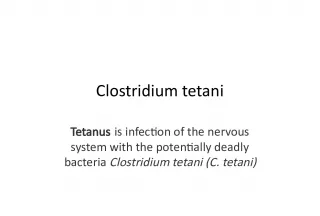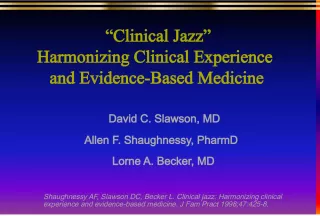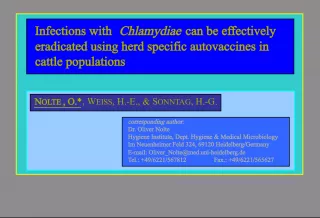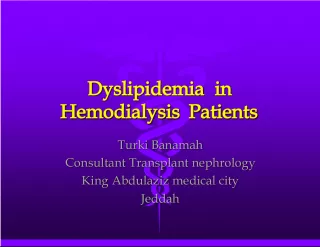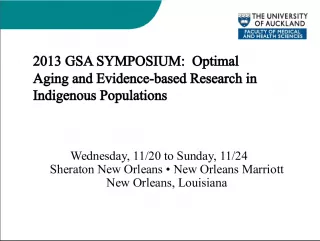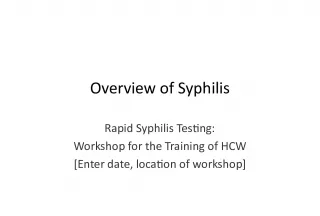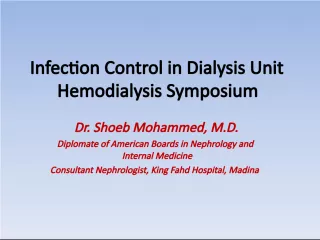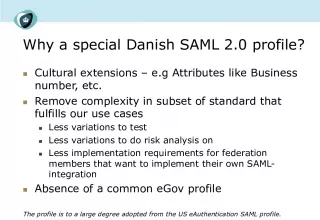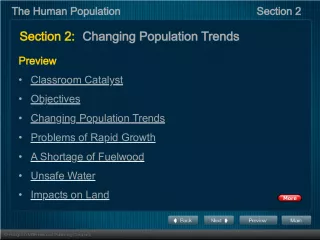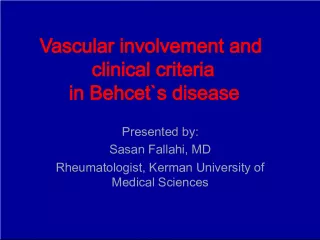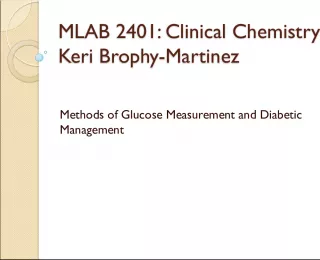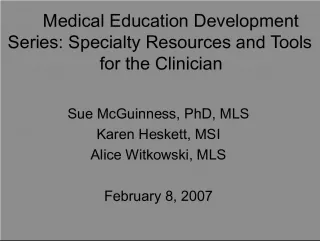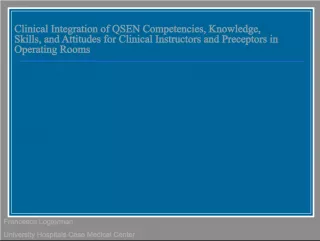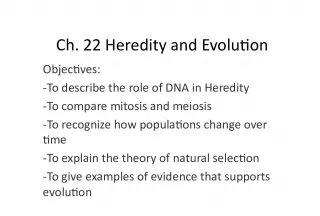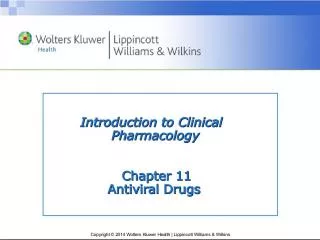Special Populations and Clinical Profiles in Chronic HBV Infection
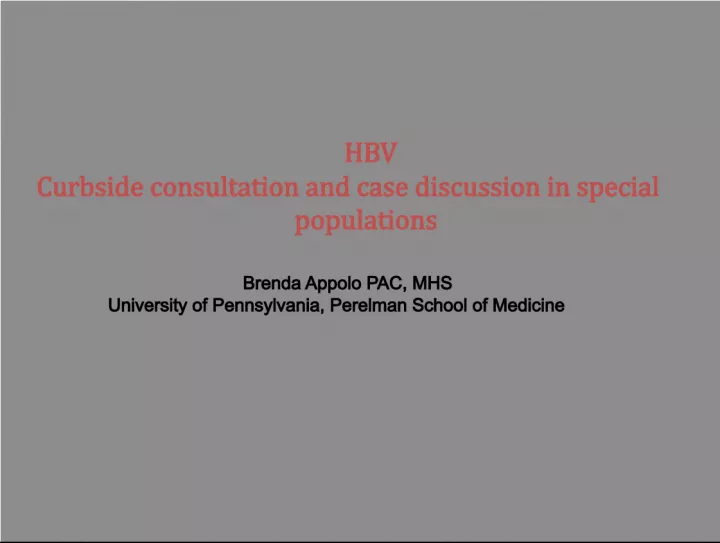

This article discusses the unique challenges and clinical profiles of chronic HBV infection in special populations such as pregnant women, HIV co-infected individuals, and liver transplant recipients. It also covers the different clinical profiles of HBV infection, from immune tolerant to active disease.
- Uploaded on | 0 Views
-
 torah
torah
About Special Populations and Clinical Profiles in Chronic HBV Infection
PowerPoint presentation about 'Special Populations and Clinical Profiles in Chronic HBV Infection'. This presentation describes the topic on This article discusses the unique challenges and clinical profiles of chronic HBV infection in special populations such as pregnant women, HIV co-infected individuals, and liver transplant recipients. It also covers the different clinical profiles of HBV infection, from immune tolerant to active disease.. The key topics included in this slideshow are HBV, special populations, pregnancy, HIV co-infection, liver transplant, clinical profiles, HBeAg, chronic infection,. Download this presentation absolutely free.
Presentation Transcript
1. HBV Curbside consultation and case discussion in special populations Brenda Appolo PAC, MHS University of Pennsylvania, Perelman School of Medicine
2. HBV: Special Populations Pregnancy HBV and Risk of Reactivation HBV and HIV co-infection Decompensated cirrhosis Hepatitis D HBV and HCV co-infection Resistant HBV HBV in Liver Transplant Recipients
3. . Clinical Profiles of Chronic HBV Infection Immune Tolerant HBeAg (+) CHB Inactive HBsAg Carrier HBeAg (-) CHB (Precore Mutant) HBsAg + + + + HBeAg + + Anti-HBe + + ALT Normal Normal HBV DNA >20,000 IU/mL ( >10 5 copies/mL) >20,000 IU/mL (>10 5 copies/mL) <200 IU/mL (<10 3 copies/mL) >2,000 IU/mL (>10 4 * copies/mL) Histology Normal/Mild Active Normal Active Adapted from Hoofnagle JH et al. Hepatology. 2007;45:1056-1075. HBeAg, hepatitis B e antigen. *Expert opinions vary as to this value
4. TIME Loss of Loss of HBeAg HBeAg Loss of Loss of HBV DNA HBV DNA Anti-HBe+ Anti-HBe+ Loss of Loss of HBsAg HBsAg Anti-HBs+ Anti-HBs+ Improved survival Improved survival Improved histology Improved histology Therapeutic Endpoints = HBeAg seroconversion
5. Approved Therapies for Chronic HBV First-Line Therapy Peginterferon alfa-2a PEGASYS Roche Laboratories 2005 Tenofovir VIREAD Gilead Sciences 2008 Entecavir BARACLUDE Bristol-Myers Squibb 2005 Second-Line Therapy Adefovir dipivoxil HEPSERA Gilead Sciences 2002 Telbivudine TYZEKA Idenix and Novartis 2006 Third-Line Therapy Lamivudine EPIVIR-HBV GlaxoSmithKline 1998 \.
6. Case #1 33 F presents for initial HBV consultation Moved from Belgium with husband 8 yrs ago to US; she was born in China 21 wks pregnant with first child; no complications Meds: Prenatals; never treated for HBV in past Exam: unremarkable for stigmata of liver disease Labs CBC wnl ALT 19; AST 16; T bil 0.9; AlkPhos 189; Albumin INR 1.0 HBV s Ag +; HBV e Ag +; HBV e Ab neg HBV > 170,000,000 iu/ml
7. Case #1 What other history is pertinent FHx: Mother HBV +; Sister HBV ?; Father HBV ?; Maternal Uncle HBV + / HCC Husband HBV per patient negative What other labs / imaging at this point? What is risk of vertical transmission to baby? Should we treat mom? Why? Why not? What should we advise mom and OB/neonatology colleagues if anything? HBV Vaccination & HBIg IM w/in 12 hours of birth HBV vaccination: Birthday, 2m, 6m Confirm Ab at one year of age
8. HBV and Pregnancy
9. Treatment of CHB in Women Considering Pregnancy Options: Treat prior to pregnancy - finite treatment course Defer treatment until post-partum Main consideration is risk to mother in absence of treatment May be deferring for years if planning >1 pregnancy Defer treatment until after first trimester 1 st trimester is period of greatest risk for developing fetus Reduction of viral load may reduce risk of transmission to infant
10. 1 Tse et al. J Hepatology 2005 2 Su et al. World J Gastroenterol 2004 Risk-Benefit Assessment Treatment During Pregnancy Possible Benefits Prevent disease progression during pregnancy Prevent flares in association with abrupt withdrawal of therapy Reduce risk of pre-term labor 1, 2 Prevent intrauterine transmission Possible Risks Adverse outcome of pregnancy
11. Antiviral Medications and Pregnancy Risk Drugs FDA Category Lamivudine C Telbivudine B Tenofovir B Entecavir C Adefovir C Interferon-alfa and pegylated interferon-alfa C
12. Pregnancy Categories Drug Safety Category Definition A Controlled studies show no risk: adequate, well-controlled studies in pregnant women failed to demonstrate risk to the fetus B No evidence of risk in humans: either animal findings show risk, but human findings do not; or, if no adequate human studies have been done, animal findings are negative C Risk cannot be ruled out: human studies are lacking, and animal studies are either positive for foetal risk, or lacking as well. However, potential benefits may justify the potential risk D Positive evidence of risk: investigational or post-marketing data show risk to the fetus. Nevertheless, potential benefits may outweigh the potential risk X Contraindicated in pregnancy: studies in animals or humans, or investigational or post-marketing reports, have shown fetal risk which clearly outweighs any possible benefit to the patient.
13. Antiretroviral Pregnancy Registry Data Agents Earliest Trimester of Exposure 1 st trimester birth defects / live births 2 nd - 3 rd trimester birth defects / live births Lamivudine 127/4088 (3.1%) 186/6635 (2.8%) Adefovir 0/48 0/0 Telbivudine 0/9 0/9 Tenofovir 31/1370 (2.3%) 18/782 (2.3%) Entecavir 1/42 0/2 http://www.apregistry.com 1 January 1989 through 31 January 2012
14. Hepatitis B Vaccine Efficacy Pre-exposure Adults and children > 95% Immuncompromised host Decreased Post-exposure Infants w/ HBsAg+ mothers Vaccine alone 65-95% HBIG + vaccine 85-95% Definition of protective response = Anti-HBs level >10 IU/L
15. Estimated Risk of Perinatal HBV Transmission (without prevention) Risk of Transmission to Infants (%) Chronic HBV infected mothers Chronic HBV infected mothers Acute hepatitis HBV infected mothers Acute hepatitis HBV infected mothers 10-40% 10-40% 90% 90% 10% 10% 80-90% 80-90%
16. Lamivudine in Late Pregnancy to Prevent Perinatal Transmission Lamivudine in Late Pregnancy to Prevent Perinatal Transmission Double-blind, RCT in China N = 141 HBsAg+ pregnant women HBV-DNA >10 9 copies/ml LAM 100 mg/D vs placebo; from GA 32 wk to 4 wk after delivery All received HBIG + HBV vaccine High drop-out rate (LAM 13%, placebo 31%) % Infant with HBV-DNA positive at age 1 yr ITT analysis ITT analysis Based on those tested Based on those tested 7% 7% 15% 15% 20% 46% Xu WM et al. J Viral Hepat 2009;16:94-103 P=NS P=0.003
17. Efficacy of Telbivudine in Late Pregnancy for Prevention of Vertical HBV Transmission % Infant with HBsAg+ at age 7 months 0% 8% Han GR, et al. J Hepatol 2011;55:1215-21 P=0.002 Open-labeled prospective study N = 141 (all Chinese) HBsAg+ pregnant women HBeAg+ HBV-DNA >10 9 copies/ml LdT 600 mg/D vs untreated control from GA 20-32 wk to delivery All received HBIG+HBV vaccine
18. Pan CQ, Mi LJ, Bunchorntavakul C, et al. Dig Dis Sci 2012;57:2423-9 Tenofovir for Prevention of HBV Vertical Transmission Retrospective analysis 11 HBV infected mothers with HBeAg positive; median HBV-DNA 9 (7.7-9.4) log 10 copies/ml TDF was started at the median GA of 29 (28-32) wk Maternal outcomes HBV-DNA significantly reduced at delivery compared to BL 6/11 pt. had HBV-DNA < 6 log 10 before delivery No significant changes in serum creatinine TDF was stopped soon after delivery in 8 pt; no ALT flare Infant outcomes All infants were HBsAg negative at 28-36 wk of age No congenital defect All infants received HBIG+HBV vaccine
19. Proposed Algorithm for HBV Management During Pregnancy Buchanan C, Tran TT. Clin Liver Dis 2010;14:495-504
20. Case #1 wrap up Should we treat mom? How long should therapy continue? Is she breastfeeding HCC surveillance?
21. Case #2 56 yr old F present to ED with new onset jaundice, malaise PMHx CD20-positive diffuse large B-cell non-Hodgkin's lymphoma; completed treatment 6 weeks prior (rituximab + CHOP) SHx no alcohol, previous IVDU 20 yrs ago Meds: levothyroxine Exam: Scleral icterus; exam otherwise unremarkable Pretreatment labs Per patient LFTs normal ED Labs ALT 333; AST 235; T bil 5.4; AlkPhos 241; Albumin 3.0
22. Case #2 What is your DDx? What patient history is most pertinent? Viral serologies HAV IgM negative; HAV total + HCV Ab +; HCV RNA negative HBV core Ab Total +; HBV IgM equivocal HBV s Ag + HBV DNA 545,000
23. HBV and Immunosuppressed States : Chemotherapy and Corticosteroids
24. Weeks after Exposure 0 4 8 12 16 20 24 28 32 36 52 100 ChemoRx and/or steroids HBV DNA HBV DNA IMMUNE IMMUNE SUPPRESSION SUPPRESSION RECOVER RECOVER Acute hepatitis ALT ALT IMMUNE REBOUND IMMUNE REBOUND Recovery of neutropenia or steroid withdrawal Natural History of HBV Reactivation During Chemotherapy Acute liver failure Death Chronic hepatitis Cirrhosis
25. Reactivation of Hepatitis B Infection Among Cancer Patients Large database from MD Anderson examined to determine HBV screening rates for patients who received chemotherapy 87 HBsAg- 87 HBsAg- 1 HBsAg+ anti-HBc- 1 HBsAg+ anti-HBc- 25 HBsAg+ anti-HBc+ 25 HBsAg+ anti-HBc+ 123 HBsAg- anti-HBc+ 123 HBsAg- anti-HBc+ 2 anti-HBc+ 2 anti-HBc+ 2% of screened 23% of positive 34 HBV Reactivation 34 HBV Reactivation 70,737 new patients 70,737 new patients 10,729 chemotherapy 10,729 chemotherapy 1,787 screened 1,787 screened 17% patients screened 1/5 with HBV risk screened 87 HBsAg 87 HBsAg 1,665 HBsAg and anti-HBc 1,665 HBsAg and anti-HBc 35 anti-HBc 35 anti-HBc Hwang JP, et al. 62nd AASLD; San Francisco, CA; November 4-8, 2011; Abst. 172.
26. Results of Prophylaxis or Treatment of 34 Patients with Reactivation Fisher s Exact Test, p<0.05 Conclusion: Persons at risk for HBV are not being adequately screened prior to chemotherapy, resulting in preventable reactivation and mortality Chemotherapy Reactivation 22% 72% 71% Hwang JP, et al. 62nd AASLD; San Francisco, CA; November 4-8, 2011; Abst. 172.
27. Patient and HBV status Male, young age Level of HBV-DNA >20,000 IU/ml HBeAg positive Active liver disease Level of immunosuppression Corticosteroids Chemotherapy regimens : Vinca-alkaloid, anthracycline Rituximab, infliximab Immune reconstitutional periods Bone marrow transplantation Risk Factors of HBV Reactivation Risk Factors of HBV Reactivation Mindikoglu AL, Regev A, Schiff ER. Clin Gastroenterol Hepatol 2006;4:1076-81 Manzano-Alonso ML, Castellano-Tortajada G. World J Gastroenterol 2011;17:15-1537
28. Efficacy of Lamivudine Prophylaxis for Chemotherapy-Induced HBV Reactivation Efficacy of Lamivudine Prophylaxis for Chemotherapy-Induced HBV Reactivation 9.2% 54% 8.7% 31% Review of 10 RCTs & prospective case series Total N=173 LAM dose 100mg/D AEs : LAM=placebo % Kohrt HE, Ouyang DL, Keefe EB. Aliment Pharmacol Ther 2006;24:1003-16
29. HBsAg negative Anti-HBs Anti-HBc + *Anti-HBs + Anti-HBc - Anti-HBs - Anti-HBc - HBV vaccination is recommended (double-dose ?) Prior vaccination with appropriate immune response Monitor HBV-DNA q 1-3 mo during and until 6 mo after immunosuppressive Rx Antiviral prophylaxis, if HBV-DNA positive Check anti-HBs at 1-2 mo after vaccination *Anti-HBs+ is considered when titer 10 mIU/ml HBV: Management of Patient Undergoing Immunosuppressive Therapy Adapted from Bunchorntavakul C, Reddy KR. Medical treatment of hepatobiliary diseases associated with ulcerative colitis. In: Lichtenstein G. editor. Medical Therapy of Mucosal Ulcerative Colitis. Springer Publishing, New York, USA; 2012 [in press]
30. HBsAg positive HBV: Management of Patient Undergoing Immunosuppressive Therapy Adapted from Bunchorntavakul C, Reddy KR. Medical treatment of hepatobiliary diseases associated with ulcerative colitis. Springer Publishing. [in press] and Lok ASF, McMahon BF. AASLD Practice guideline 2009 HBV-DNA 2,000 IU/ml Normal or elevated ALT HBV-DNA <2,000 IU/ml Normal ALT HBV treatment Delay immunosuppressive Rx until anti-HBV is initiated and HBV DNA negative Start antiviral prophylaxis before initiation of immunosuppressive Rx and continue for 6 mo after discontinuing all immunosuppressive Rx (12 mo for rituximab) LAM can be used, if the anticipated Rx duration is <12 months ETV or TDF is preferred, if longer duration of Rx is anticipated
31. Case #3 49 yr old male presents with self reported history of Hepatitis A,B,C His only complaint is fatigue; referred by area health clinic Exam notable for temporal muscle wasting; trace icterus, + fluid wave He has high risk behaviors including IV drug use, multiple sexual partners; alcohol was never my thing Labs: T bil 2.1; AST 119; ALT 242; Albumin 3.0; AlkPhos 245; INR 1.3 You have no medical records or labs otherwise You order viral hepatitis panel HCV Ab positive HBV s Ag positive HBV IgM negative Now what? What is the likely hood this patient actually has chronic, active HBV and HCV What other co infections should we screen for in ALL our patients?
32. HBV and HIV Co-infection
33. Prevalence of HBV-HIV co-infections by Geography and Route of Infection Thio CL. Hepatology 2009;49:S138-S145
34. Liver-Related Mortality Liver-related mortality rate (per 1,000 person-years) Thio CL, et al. Lancet 2002;360:1921-6 Multicenter prospective cohort study of 5293 men who had sex with men (in USA)
35. Influence of HIV on HBV Lower rates of clearance of HBeAg Increased serum HBV DNA viral load 1 Reactivation of hepatitis in asymptomatic carriers Increased liver injury Faster fibrosis cirrhosis and HCC Higher mortality and morbidity (1) Perillo RP, Regenstein FG, et al. Chronic hepatitis B in asymptomatic homosexual men with antibody to the human immunodeficiency virus. Ann Intern Med 1986:105:382-3
36. Influence of HBV on HIV CONFLICTING DATA Increased rate of HIV progression to AIDS ? 1 No change in progression ? 2 Cohort studies suggest that HBV does not appear to influence the progression of HIV. (1) Eskild A, Magnus P, et al. Hepatitis B antibodies in HIV-infected homosexual men are associated with more rapid progression to AIDS. Aids 1992:6:571-4 (2) Diamondsstone LS, Blakly SA, et al. Prognostic factors for all-cause mortality among hemophiliacs infected with human immunodeficiency virus. Am J Epidemiol 1995:142:304-13
37. HBV and HIV Therapies Wild-type HBV YMDD HBV HIV Activity Interferon (IFN) S S N Lamivudine (LAM) S R Y Adefovir (ADV) S S N * Entecavir (ETV) S (0.5mg) S (1mg) Y Emtricitabine (FTC) S R Y Tenofovir (TDV) S S Y Telbivudine (LdT) S R N * ADV at dose 10mg/D has negligible activity against HIV (activity against HIV started at dose 30mg/D) LdT has no activity against HIV, but should not be used in HIV/HBV co-infection because risk of selection of M204I mutation in YMDD motif of HIV
38. Not on HAART and treatment for both HIV and HBV in planned HBV-DNA , ALT (Liver biopsy is considered in pt. with fluctuating or mildly elevated ALT) AASLD Practice Guideline 2009 Start antiviral Rx that is active against both viruses (combination Rx is preferred) Lamivudine or Emtricitabine + Tenofovir When HAART regimens are altered, drugs that are effective against HBV should not be discontinued without substituting another drug that has activity against HBV
39. Hepatitis D
40. RCT, 31 HDV patients HBV-DNA levels decreased at wk 48 and rebounded at week 72 in all patients Patients (%) Results at 72 weeks FU Treatment of Hepatitis D: Peginterferon Versus Adefovir Treatment of Hepatitis D: Peginterferon Versus Adefovir P=0.006 P=0.004 P=0.02 P=0.003 Wedermayer H, et al. N Eng J Med 2011;364:322-31
41. HBV Decompensated Cirrhosis
42. Lamivudine significantly reduced the incidence of hepatic decompensation and HCC Multicenter, DB-RCT in Asian populations, N=651 P=0.001 P=0.047 Liaw YF, et al. N Engl J Med 2004;351:1521-31
43. Entecavir and Tenofovir in Advanced Cirrhosis DB-RCT, N=112 CTP and MELD scores improved in all groups P=NS, across treatment groups Tolerability failure = increased Cr 0.5 mg/dl from BL or serum phosphate <2 mg/dl x2 consecutive visit % patients (at 48 weeks analysis) Liaw YF, et al. Hepatology 2011;53:62-72 300 mg 0.5 or 1 mg
44. Summary & Curbside Thoughts Prenatal HBV screening does not always lend way to linkage to care HBV monitoring during pregnancy and post pregnancy / life long appropriate Hepatitis B core check it! Chronic HBV infection (sAg+) and Chronic HCV infection (+RNA) rare -- - treatment paradigm will change in era of HCV DAAs for HCV Delta screening one time for all; patients tend to have evidence of advanced disease; low HBV DNA titers Always treat HBV in HBV s Ag and clinical or histological evidence of cirrhosis Chronic HBV infection a carcinogen! Yearly HCC surveillance at 40 for males; 50 for females Earlier age surveillance if FHx HCC or African If cirrhosis semi annual surveillance

